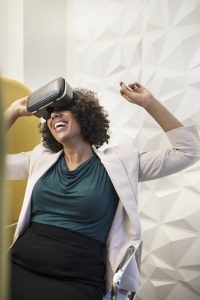When John Lasseter, chief creative officer of Pixar said “The art challenges the technology, and the technology inspires the art” he really did knock the nail on the head in terms of attitude towards arts and technology. But access to technology is still an issue for many artists and many don’t have the skills to embrace John’s mantra. So what can be done?
 In the past few years, and I’m sure you will find more policies created in the next decade, digital technology, immersive art, virtual reality, projections, animation, 3D prints and many more art mediums are, and will be, the future themes for the art industry. But have these tools become the master of the maker? John Lasseter thinks not. Are there enough artists who have the skills to make use of these tools to produce technology based works? Many think not, so where do we need to start to ensure artists can produce new works using technology?
In the past few years, and I’m sure you will find more policies created in the next decade, digital technology, immersive art, virtual reality, projections, animation, 3D prints and many more art mediums are, and will be, the future themes for the art industry. But have these tools become the master of the maker? John Lasseter thinks not. Are there enough artists who have the skills to make use of these tools to produce technology based works? Many think not, so where do we need to start to ensure artists can produce new works using technology?
Working for over 20 years in the creative industries and the arts, and advising 1000’s of venues, galleries, businesses, artists and cultural organisations, my immediate and somewhat personal answer would be no on both counts. But let’s not confuse this digital and technology theme around audience and operations. We are talking about the production of artistic works/products.
In my experience many artists (90%+) have just the basic computer skills to administrate their practice but are never exposed to gaining skills or accessing different forms of technology to produce new works. Many reasons behind this include not being able to afford the technology; that access to the technology is for those in a privileged circumstance e.g. students who access the technology at university, and of course artists not having the money to spend time experimenting with technology.
This is why calls, tenders and competitions around innovation in arts using technology are seldom innovative. Yes, they use data/digital to build new business models, improve operations or build audiences but few are around new arts and culture products.
One way to look at this is the video industry. Once only produced by those with the knowhow and access to the technology it is now open to all, with many people with few skills being able to purchase technology at low cost producing videos for online consumption and even making a living from it.
So does this tell us we have reached a point where the tools for innovative artworks using technology is now at the same point? We really don’t know as works made using technology is still rare to find. Which leads me to my days as an IT company owner and Microsoft Partner.
It’s the late 1990’s Microsoft were producing many new hardware and software products but adoption was slow. Mobile phones were developing and the business community were not utilising these digital innovations.
 To overcome the issue Microsoft invested in small business technology centres and even touring buses around the UK. In these venues business owners could venture in and try out the new technology on display and speak to advisors. And it worked. The principle of try-before-you-buy with hands on workshops did the trick. Should we do the same with arts and technology? Should funding agencies like the Arts Council support the provision of similar venues or touring creative playgrounds were the technology and expertise is at hand to show artists the possibilities of technology use?
To overcome the issue Microsoft invested in small business technology centres and even touring buses around the UK. In these venues business owners could venture in and try out the new technology on display and speak to advisors. And it worked. The principle of try-before-you-buy with hands on workshops did the trick. Should we do the same with arts and technology? Should funding agencies like the Arts Council support the provision of similar venues or touring creative playgrounds were the technology and expertise is at hand to show artists the possibilities of technology use?
Similarly the design sector is also in the same boat but further ahead than the arts sector. Many designers try out new services to sell or compliment there offer. This may include a graphic/web designer who decides to adopt photography to expand his services, or a film maker who decides to learn about music making to compliment his production offer. All is about the diversity of skills and using technology. So why can’t the art sector do the same?
Admittedly, we are seeing a rise in artists working with several art forms such as painting, mixed media, textiles, etc. But all these things are accessible. What we need is accessibility to the new and emerging technology that creates new art forms.
I believe that we should start this arts and technology revolution in the same way as Microsoft did in the 90’s. We should tour England and showcase all applications and allow the creativity of artists to ‘challenge the technology, and for the technology to inspire art’. What do you think?
